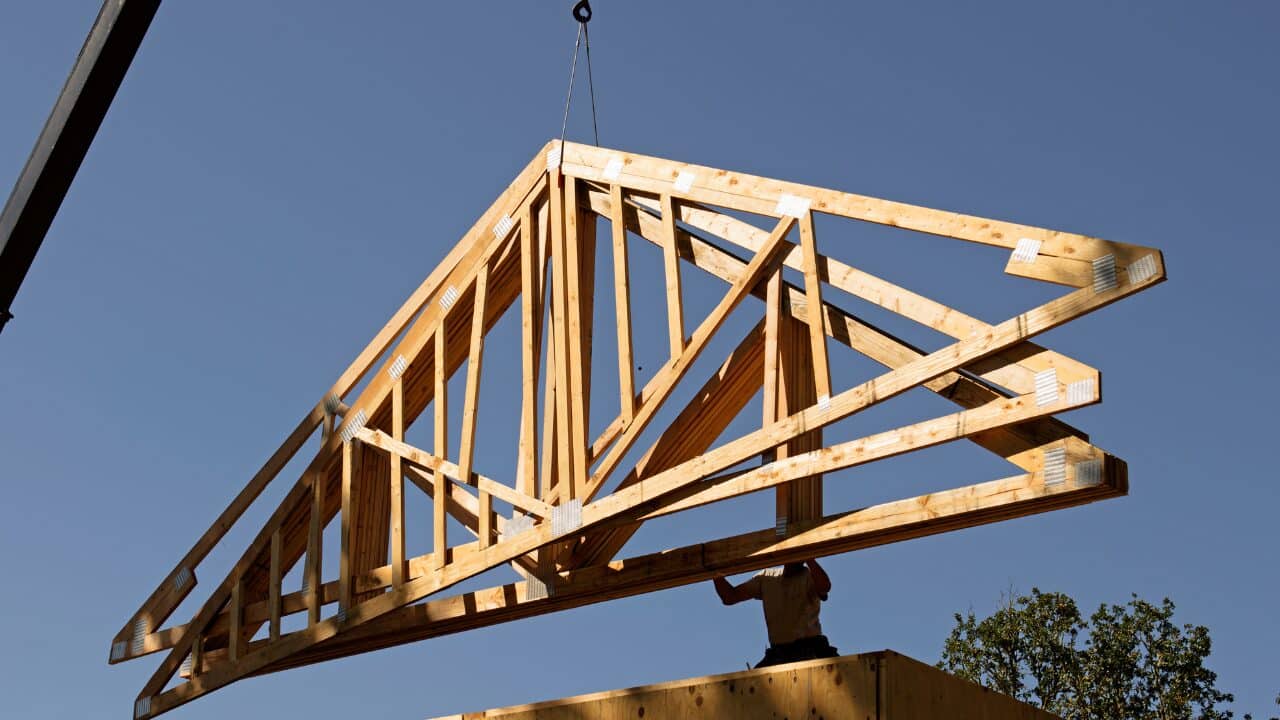Most people assume that a roof is made entirely of shingles when it comes to roofing. On the other hand, this could not be further from the truth. While shingles play an essential function in protecting our property from the weather, the other roof components are far more critical.
Your roof would not be nearly as strong as now if it didn’t have things like roof decking. What exactly is roof decking? Roof decking, commonly referred to as roof sheathing, is the base of any roof. The shingles or tiles are installed on the supporting wood, concrete, steel, or other material.
Between the structural components trusses and joists and the insulation and weatherproofing layers, the roof deck is the roof materials, coatings, layers, etc. In a nutshell, the roof deck is the area of the roof where everything else is installed. As a result, it must be strong enough to support the weight while durable enough to withstand some flex.
Table of Contents
Roof Decking: An Overview
The basis of your roofing system that joins the roof to your house is roof decking, also known as sheathing. It’s the base that covers the rafters and supports the weight of the roofing shingles laying on top of the structural trusses of your attic. Roof decking is critical to the structure of your home, even if you can’t see it.
And deteriorating roof decking, which is unable to hold the roof’s weight, might lead to major structural problems.
What Is The Basic Roll Of Roof Decking?
As previously said, it plays an integral part in laying the basis for your roof. Your home’s rafters are directly joined to the roof deck. The roof decking really sustains the entire weight of the roof once the shingles are on! This isn’t a simple task.
Roof decking is not only crucial for the construction of your roof, but it also serves as a structural element for the integrity of your home!
Roof decking also secures the rafters’ position, ensuring that they keep their optimum spacing throughout time. While roof decking hasn’t traditionally been a part of home construction, many specialists now see it as a crucial structural component.
When you replace shingles on a rotting or damaged roof deck, you risk causing more harm to your property in the long run. The shingles you’re putting can be damaged and won’t operate as well as they should. This will drastically reduce the lifespan of your new roof.
Water might pool in drooping regions due to damaged shingles, causing leaks. If the roof deck is soft or damaged when installing the roofing materials, the nails used to install the shingles will not hold. Wind or gravity can then cause entire sections of shingles to be lost.
Types Of Roof Decking
Well, there are various types of roof decking. However, you have to choose one according to your roofing needs and requirements.
1) Sheet Decking
Sheet decking is also known as sheathing made up of flat sheets of wood. Plywood and OSB are the two forms of sheet decking. The most prevalent form of decking used on roofs today is OSB. It’s constructed composed of compressed wood chips/strips that form a flat wood sheet.
Depending on the span of the rafters, plywood comes in a variety of thicknesses. Even though OSB is the most popular, plywood is nevertheless widely utilized in homes today.
2) Plank Decking
Before the invention of plywood, the most common type of decking was plank decking. This form of decking is constructed out of elongated and rectangular wooden boards. This type of decking is still used on roofs today, though it isn’t as prevalent as it once was.
No doubt, both types of sheet decking are excellent choices, but which one you choose is determined by your budget and the wood’s availability.
3) What Are The Reasons Behind The Wrecking Of Roof Decking
The worst enemy of your roof is water. Because roof decking is constructed of wood and wood composites, it is especially prone to rotting and water damage when subjected to prolonged or excessive wetness. Water can enter your roof in a variety of ways.
Moreover, inadequate roof ventilation can allow water and moisture to slowly make their way into your roofing system, resulting in the rotted roof decking.
If you don’t fix a leak as soon as you find it, you risk mildew, structural damage, water damage, and even fire if water gets into touch with electrical wires.
4) Can You Repair The Roof Decking?
Are you thinking about undertaking simple patchwork to extend the life of your roof? Reconsider your position. Roof deck repair isn’t an option when it comes to rot. You may have to replace it entirely.
The longer you wait to replace damaged roof decking, the more difficulties it might cause, resulting in costly repairs and more mold and mildew.
You may need to replace your decking when you replace your roof. If the integrity of any of your roof decking is damaged or there are symptoms of rotting, it will need to replace. While replacing the roof sheathing at the same time as the rest of the roof is not required, many homeowners find it convenient to do so.
Although it is neither convenient nor economical to replace the roof decking, the advantages of high-quality sheathing material are difficult to dispute.
Final Verdict
While repairing a roof is pricey, it is far less expensive than rebuilding stained drywall, framing and joists, or water-damaged electrical systems in the long run. You will be able to make informed decisions about roof repairs and maintenance now that you have a better understanding of the many components of your roof.





